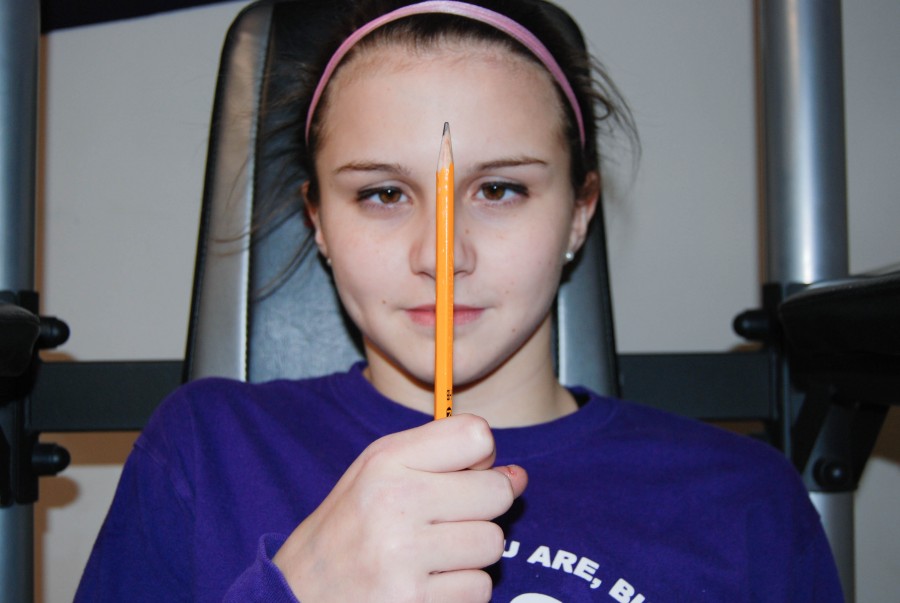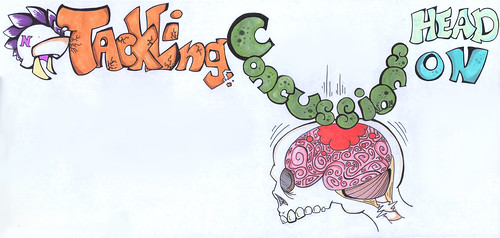It was a Thursday night in October 2011 under the lights of Carstens field. Max Sale was playing the last football game of his freshman year. After the team lost, Sale headed off to the locker room with the rest of his teammates. “I was laying down on the floor with a headache in the locker room and something just didn’t feel right. I didn’t feel normal but nothing was wrong. It felt like I was behind a glass wall watching everything happen, but I couldn’t comprehend what was happening,” Sale said. He doesn’t remember one specific play when he injured his head, but knew something bad happened. “I was playing inside linebacker, and I know I was just hit really hard,” Sale said.
The result of the hit was a concussion. According to an article written by The New York Times in 2014, a concussion is defined as a traumatic blow to the head. The hit can cause the brain to shake against the skull, causing injury. Because of this, the person may experience temporary or permanent brain damage.
Nausea, dizziness, confusion, and headaches are among the most common symptoms of a concussion. If Sale had complained of these symptoms earlier, he would’ve been evaluated by the school’s athletic trainers. However, since the game was over for some time, the trainers were no longer available.
“We’ve taken the decision-making [when it comes to concussions] out of the players’ and even the coaches’ hands and put it into the trained professionals hands,” Assistant varsity football coach and social studies teacher Keith Lichtenberg said. “What’s important is to treat concussions, or any injury, with the utmost sincerity.”
According to athletic trainer Krystal Stawychey, the treatment for an athlete with a suspected concussion varies. In severe cases, an athlete may be taken to a hospital if a loss of consciousness occurs. A mild to moderately severe concussed athlete is asked simple questions like the date, their location, and other memory probing questions. Next, the athlete is sent home, told to rest, and evaluated within the next couple of days by the trainers.
At the beginning of the season, athletes take the imPACT test which gives a baseline score for the athlete’s cognitive ability at the time of the test. During each evaluation following a concussion, the athlete retakes the test and the new score is compared to the baseline. Using this test and general exams from the trainer, it is up to the parents to decide what further action to take, which normally results in a visit to a physician.
“There’s not one symptom that warrants a concussion,” Stawychey said. “Some symptoms include nausea, light and noise sensitivity, confusion and difficulty concentrating. Anyone that has been diagnosed with a concussion does not experience the same symptoms, nor do they experience all of them.”
Sale continued with his normal routine for a few days until he realized something wasn’t right. “I was walking in the hallway at school and everything was really bright. The lights in the hallway were giving me an unbearable headache. It felt like there was an elephant sitting on my head, and that’s when I knew I had to go to the doctor,” Sale said.
After meeting with a sports medicine doctor, missing over a week and a half of school, and dealing with symptoms for a month, Sale was finally diagnosed with post-concussion syndrome.
With a regular concussion, a patient recovers within a week or two. With post-concussion syndrome, the symptoms are more severe and the recovery is stretched over a six to 12 month period. For Sale, the worst was mid-November through January, up to three months after the initial hit. “I could barely leave my bed. I always felt crappy and my parents didn’t know what was wrong with me,” Sale said.
After the diagnosis, Sale missed an additional month and a half of school. He was medically excused from taking his first semester finals and was told not to complete any missed work by his doctor in order to give his brain more time to recuperate. By the end of February, Sale was only attending half days of school, making it to as many days as he could bear in order to give his brain more time to recuperate.
Senior Michael Prochazka is one of Sale’s good friends and watched him go through post- concussion syndrome. “When Max hurt his head it was almost like he was a new person. He acted differently and it was hard to have a conversation with him,” Prochazka said.
For two months, Sale went to three-hour therapy sessions through Marianjoy Rehab Hospital in Wheaton. Two to three times a week, he would work on his occupational, mental, and cognitive functions. By the end of April, he was cleared to go back to a full day of school and his normal life, for the most part.
Due to doctor’s orders, Sale wasn’t allowed to play football or any contact sport his sophomore or junior year. “You kind of lose yourself as a person, especially being an athlete and having your whole life centered around a sport. I felt like I had to re-discover myself after being out of it for so long,” Sale said.
After two years and a meeting with head coach John Wander, Sale’s parents allowed him to return to football for his senior year, playing tight end and fullback on the varsity team. “It felt amazing to be back playing the sport I love,” Sale said. “If I can help somebody with my experience from this, it makes it a little better. I had a crappy experience and if I could make another person’s time going through this better, it would feel good.”
Mia Chudzik | Feature Editor
[email protected]



